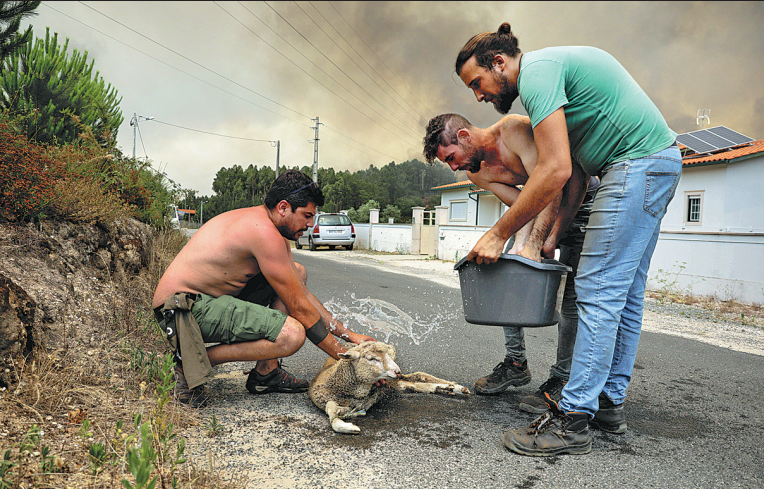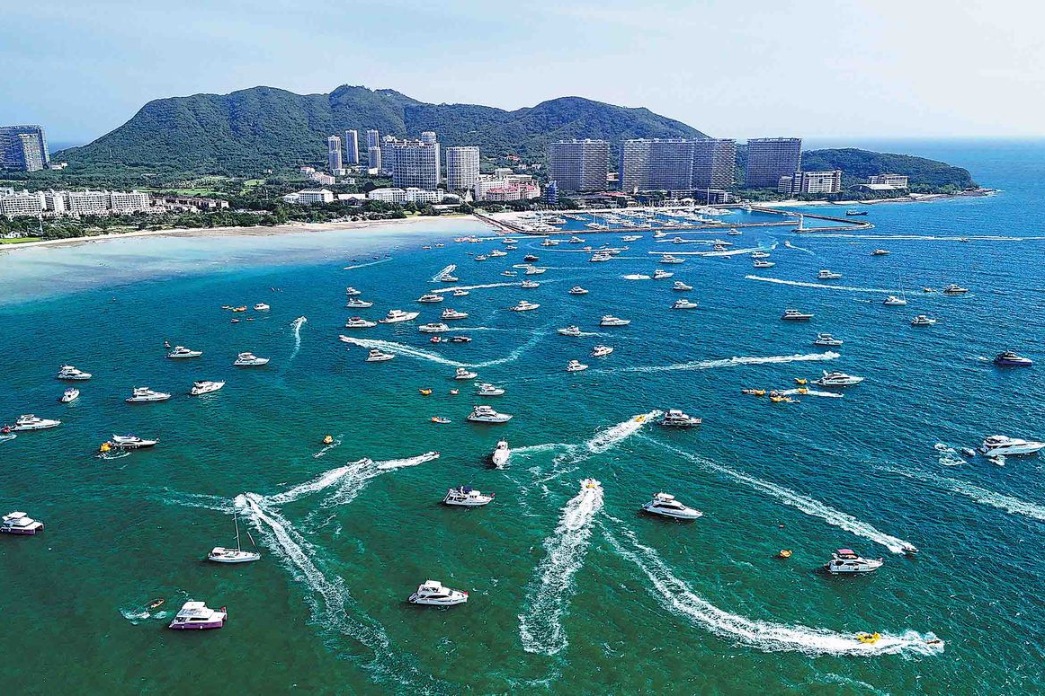Extreme weather made worse by climate change
By KARL WILSON in Sydney | China Daily Global | Updated: 2022-07-14 14:00

The evidence of climate change causing or contributing to extreme weather events and natural disasters around the world is mounting daily, threatening the lives and jobs of hundreds of millions of people, according to scientists and analysts.
Dangerous heat waves surpassing 40 C are consuming large parts of the northern hemisphere, including the Indian subcontinent. In Sydney, Australia's largest city, thousands were forced in recent days to flee floodwaters in and around the city for the second time this year.
Permafrost is melting in the Arctic, forest fires rage in Alaska, Europe is experiencing yet another heat wave, and glaciers are melting in the Italian Alps.
Such climate events, which in the past had been deemed "once in a lifetime" happenings, are now becoming regular occurrences.
As the world's climate changes, it is not only impacting where people live but affecting food and water security. In Australia, experts are now urging governments from federal to the local levels to seriously reconsider urban development in flood and fire prone areas.
Jennifer McKay, a professor of business law at the University of South Australia, said climate change and the risks that now come with it must be part of the decision-making process for urban development.
"We need a national Cabinet approach to this, guided by experts to set the standards," she said, referring to Australia.
Otherwise, litigation will occur, and insurance will be impossible to attain for people living in flood-prone areas of the country.
Piet Filet, a flood expert, said reducing the impact of floods in and around the Sydney Basin "will require a long-term resilience building program with communities in flood-prone catchments".
Filet, from the Australian Rivers Institute at Griffith University, said the history of flooding in Australia "not only reflects changing baselines in the frequency of extreme rainfall events, but also the need for key aspects of resilience building to be in place well in advance".
"Long-term land use planning that minimizes flood exposure is critical," he said. "Infrastructure in flood plains needs to be built to withstand the impact of fast flowing water and overcome the isolation of communities during floods."
Around the world, it is a similar story as countries battle natural disasters made worse by climate change.
Europe now faces one of its toughest years when it comes to natural disasters like droughts and wildfires because of increasing climate change. Stronger heat waves have hit Southern and Western Europe, as well as North America.
European Union Commissioner for Interinstitutional Relations Maros Sefcovic said on July 7 that the present drought in Europe could become the "worst ever".
"Statistics show that since 2017, we have the most intense forest fires ever seen in Europe. And that we unfortunately expect the 2022 forest fire season could follow this trend," he said.
The comments came just days after the deadly collapse of a glacier in the Italian Alps at Marmolada which resulted in an avalanche killing 10 hikers.
Walter Milan, a spokesman for Italy's National Alpine and Cave Rescue Corps, told The Guardian newspaper on July 4 that temperatures on the peaks around Marmolada had topped 10 C in the days leading to the avalanche.
"That's extreme heat" for the peak, he said. "Clearly it's something abnormal."
In Asia, an intense heat wave has gripped much of India in recent weeks, with temperatures hitting a record 49.2 C in parts of the New Delhi area, and marking the fifth heat wave in the capital since March.
The severe heat waves have thrown millions of lives and livelihoods out of gear in northern India this summer, with neighboring Pakistan also affected.
Meanwhile, forest fires have also become another product of global warming.
In the United States, Alaska is said to be on course for a historic wildfire year. By early July, over 809,000 hectares had burned in the state, more than twice the size of a typical Alaska fire season.
Rick Thoman, a climate specialist at the International Arctic Research Center in Fairbanks, Alaska, said several factors including global warming have played into this year's fire season.
He told the academic website The Conversation that "wildfires" are part of the natural ecosystem in the extreme northern forests and wetlands which merge with the Arctic tundra, "but the fires we're getting now are not the same as the fires that were burning 150 years ago".
"More fuel, more lightning strikes, higher temperatures, lower humidity-they combine to fuel fires that burn hotter and burn deeper into the ground, so rather than just scorching the trees and burning the undergrowth, they're consuming everything, and you're left with this moonscape of ash," he said.
New research by scientists from Australia and the US shows that fire weather has risen significantly in most world regions since the 1980s. Increases have been particularly pronounced in Western North America, the Amazon area and the Mediterranean.
karlwilson@chinadailyapac.com
























